From First Principles:
A New Republic: The Progressive Assault on the Founders’ Principles
Matthew Spalding - 01/09/12
Matthew Spalding - 01/09/12
Understanding America’s Founding documents is essential. Just as important is understanding recent developments that threaten the system of government the Founders put in place. In this excerpt from the best-selling book We Still Hold These Truths: Rediscovering Our Principles, Reclaiming Our Future, Matthew Spalding highlights profound changes over the past century that threaten the Founders’ principles.
The year 1987 marked the two hundredth anniversary of the United States Constitution. The Commission on the Bicentennial, headed by Chief Justice Warren Burger, regarded the anniversary as “an historic opportunity for all Americans to learn about and recall the achievements of our Founders and the knowledge and experience that inspired them, the nature of the government they established, its origins, its character, and its ends, and the rights and privileges of citizenship, as well as its attendant responsibilities.” The commission invited “every state, city, town and hamlet, every organization and institution, and every family and individual” to celebrate the great occasion with fitting ceremonies, both solemn and festive.
Not everyone agreed. “I cannot accept this invitation,” wrote Associate Justice Thurgood Marshall, “for I do not believe that the meaning of the Constitution was forever ‘fixed’ at the Philadelphia Convention.” Not only is the Constitution merely “a product of its times,” Marshall wrote, but it also “was defective from the start.” All of the patriotic celebrations marking the grand event, “prompting proud proclamations of the wisdom, foresight, and sense of justice shared by the Framers and reflected in a written document now yellowed with age,” Marshall argued, amounted to “little more than a blind pilgrimage to the shrine of the original document now stored in a vault in the National Archives.” Meaningless homage to faded documents enshrined in glass cases. Mere words, handwritten on a few sheets of parchment.
In many circles, especially among our intellectual, cultural, and political elites, the principles of America’s Founding have been largely abandoned because they are seen as either outdated or defective, the product of wealthy, undemocratic slaveowners bent on erecting barriers to change and progress. The American Founders are more to be departed from than looked up to as a guide for today. America’s great founding documents still exist, but they must be disentangled from that past and continually adapted to the future.
How—and why—did this come to be? The answer is to be found in profound changes over the course of the twentieth century in how we think of ourselves, our past, and the underlying principles of our nation.
What began a hundred years ago as an intellectual project made up mostly of academics and independent writers became a popular reform effort under the banner of progressivism. It informed the large-scale political movement of modern liberalism that came to dominate the politics of the twentieth century. It continues to shape our politics and confuse the public mind.
If we wish to regain our bearings, we need to understand and come to grips with these changes. If we are to reorient our nation to its first principles, we must understand how deeply these changes have transformed our politics and society—and where, unchecked, they are taking our country.
The American Consensus
The great challenge of free government, as the Founders understood it, was to restrict and structure the powers of government in order to secure the rights articulated in the Declaration of Independence, preventing tyranny while preserving liberty. The solution was to create a strong, energetic government of limited authority, its powers enumerated in a written constitution, separated into different functions and responsibilities, and further divided between the national and the state governments in a system of federalism. The result is a framework of limited government and a vast sphere of human freedom, leaving ample room for republican self-government.
A general agreement on these core principles—equal rights grounded in a permanent human nature, constitutionalism and the rule of law, republican self-government—formed the underlying consensus of the American political tradition, underscored by the experience of American political life. Despite their various (and sometimes significant) disagreements and the eventual divisions among them that led to the establishment of the first political parties in the United States, Washington, Madison, Hamilton, Jefferson, Adams, and the other leading Founders all agreed when it came to the foundational concepts behind the American idea of liberty and constitutionalism. This principled consensus—transcending important differences of practical application and party competition—generally held from the time of the founding to the end of the nineteenth century, through the decline of the Federalists to the rise of the Democratic-Republicans, from the Jacksonians to the development of the slavery controversy and the outbreak of the Civil War.
The one great exception proves the rule. That a nation is based on principles does not always mean a complete agreement on the meaning of those principles. With the expansion of slavery in the decades after the American Founding, and the challenges it presented to the ideas as well as the institutions of constitutional government, it became increasingly imperative to resolve finally the question of slavery consistent with America’s foundational principles. Does the institution of slavery violate those principles? Can a territory decide by majority vote to be a slave state? Can the Supreme Court decide that black persons are property? Are all men really created equal?
The Civil War of 1861–65 represented a profound disagreement over the most basic meaning of America’s foundational principles. Eleven southern slave states declared their secession from the United States and sought to form the Confederate States of America, while the remaining free states and the five border slave states remained loyal to the union under President Abraham Lincoln. Some, like Senator John C. Calhoun of South Carolina, had denied the principle of human equality and gone so far as to embrace slavery as a “positive good.” Alexander Stephens, the vice president of the Confederacy, argued that slavery would be the cornerstone of their new nation. Chief Justice Roger B. Taney argued for the Supreme Court in Dred Scott v. Sanford that slaves were property and “had no rights which the white man was bound to respect.” Senator Stephen Douglas of Illinois hoped to solve the problem by turning to “popular sovereignty” and allowing territories and new states to decide for themselves whether to endorse slavery or not. It didn’t matter what they decided as long as a majority consented.
Abraham Lincoln rejected these views. He held that slavery violated the Declaration of Independence and recalled the nation to the Founders’ constitution and the principles it enshrined in order to place slavery once again on “the road to ultimate extinction.”
Lincoln exemplified the older understanding of a formal constitutionalism built on the foundations of permanent principles. He once explained the relationship between the Declaration of Independence and the Constitution by reference to Proverbs 25:11: “A word fitly spoken is like apples of gold in a setting of silver.” While he revered the Constitution, and was a great defender of the union, he knew that the word “fitly spoken”—the apple of gold—was the assertion of principle in the Declaration of Independence. “The Union, and the Constitution, are the picture of silver, subsequently framed around it,” Lincoln wrote. “The picture was made for the apple—not the apple for the picture.” He maintained that the Constitution was made to secure the principles proclaimed in the Declaration of Independence, and that those principles and the Constitution, properly understood, were perfectly compatible. His great achievement, in probably the most trying epoch of our history, was to preserve our constitutional republic while restoring its dedication to the timeless principles of liberty, “applicable to all men and all times,” that form the central idea of America.
America’s principles, severely tested by the deadliest war in the United States’ history, were ultimately vindicated, constitutional government was upheld, and the American consensus was restored on the grounds defined by the American Founding. The question of slavery was settled partially with the Emancipation Proclamation in 1863, and then finally with the Thirteenth and Fourteenth Amendments, abolishing slavery and extending citizenship and the protection of fundamental civil rights to the newly freed slaves. The Fifteenth Amendment secured voting rights to the former slaves and their descendants. In assuring that no state shall abridge the privileges or immunities of any citizen, deprive any person of due process of law, or deny to any person within its jurisdiction the equal protection of the law, these amendments resolved the question of slavery and can be said to have completed the constitutional design of the American Founding.
A New Republic
In the years after the Civil War, as the nation began to reunite and rebuild, American society rebounded, the economy expanded, and the United States prospered. Never before had there been such a vibrant, diverse, and strong democratic nation. Many thought that with the conflict over and changes abounding, America was becoming a new nation.
The unleashing of the industrial revolution, the expansion of urban society, and the development of the United States as a modern world power—not to mention the large-scale challenges and opportunities that resulted from these changes—led to widespread calls for rethinking and reform in virtually every aspect of American life. The intellectual and programmatic response to this overwhelming sense of change was called progressivism, and the period between 1890 and 1920 is generally called the Progressive Era. While it was pervasive, progressivism was not all of one piece. There were many different manifestations: the muckraking novels of Upton Sinclair, the architecture of Frank Lloyd Wright, the revisionist history of Charles Beard, the progressive educational theories of John Dewey. There were extensive reform efforts throughout society—ranging from the establishment of new disciplines in the social sciences to the theological project known as the Social Gospel movement—and progressive political candidates and legislation at the local, state, and federal levels of government.
A number of leading political thinkers came to believe that the Founders’ political science could not adequately address the emerging character of society. Concluding that the old constitutional system had failed (indeed, its insistence on principles of natural equality and constitutional government could be blamed for bringing the Civil War upon the nation), they argued that America needed a new way of thinking appropriate for the modern age. And so it was that they looked for new foundational ideas and other models of governance outside of the United States, in what were perceived to be more modern nations like England, France, and especially Germany. Based on the new concepts they learned there, these thinkers sought to build a new consensus and a new politics in the United States. What resulted was a broad intellectual, social, and political movement that for the first time self-consciously aimed at fundamentally transforming the principles and practices of American constitutionalism.
New (Anti-) Foundational Principles
The American concept of liberty stems from certain foundational ideas about man and nature, equal rights, and the consent of the governed, from which follow other principles, from religious liberty and economic freedom to self-government and independence.
The new progressive thinking was profoundly shaped by two revolutionary, anti-foundational concepts.
First, the progressive view rejected outright the very idea, at the heart of the Founders’ way of thinking, of political thought and practice being guided by permanent principles. Deeply skeptical about any philosophical ideas that claimed to be true beyond their particular situation, the progressives held that there were no fixed truths—certainly no objective or unchanging standards of right to guide politics. All truth claims are contingent, merely personal “values” relative to other equally valid claims. It made no sense to say anything was a “self-evident” truth. This was a faulty assumption, they argued, and assuredly the wrong starting point for establishing a political system, especially one meant to be responsive to changing circumstances. As the prominent progressive historian Carl Becker put it in 1922, “To ask whether the natural rights philosophy of the Declaration of Independence is true or false, is essentially a meaningless question.” This relativist view renders meaningless the whole American political tradition.
By this argument, any concepts of natural right or natural law—that is, ideas of right and law grounded in a fixed or enduring nature—had to be rejected. “The idea that men possess inherent and inalienable rights of a political or quasi-political character which are independent of the state, has been generally given up,” the prominent progressive scholar Charles Merriam wrote in his 1920 book American Political Ideas. “The present tendency, then, in American political theory is to disregard the once dominant ideas of natural rights and the social contract, although it must be admitted that the political scientists are more agreed upon this point than is the general public.” Notions of a natural moral order, of standards that can and should guide man and politics, were considered naïve and akin to mythology. “No man who is as well abreast of modern science as the Fathers were of eighteenth century science, believes any longer in unchanging human nature,” wrote the historian Richard Hofstader. “Modern humanistic thinkers who seek for a means by which society may transcend eternal conflict and rigid adherence to property rights as its integrating principles can expect no answer in the philosophy of balanced government as it was set down by the Constitution-makers of 1787.”
The second anti-foundational concept is called “historicism.” According to this view, not only are ideas relative to each other but all ideas and their meaning (and status) are relative to their moment in time. As such, ideas are relative to the era in which they are constructed, and must constantly be adapted to various historical developments. This means that ideas of the past are relevant only to the past. What might have been suitable for one century inevitably becomes outdated in another, making the past inferior to the present and the present but a step on the way to the future. The problem with the American Founders, the new thinkers argued, is that they did not understand and account for this lack of permanence and the constant flux and change in all things. Consider this from John Dewey, the progressive father of modern education theory:
Liberalism is committed to the idea of historic relativity. It knows that the content of the individual and freedom change with time; that this is as true of social change as it is of individual development from infancy to maturity. The positive counterpart of opposition to doctrinal absolutism is experimentalism. The connection between historic relativity and experimental method is intrinsic. Time signifies change. The significance of individuality with respect to social policies alters with change of the conditions in which individuals live. The earlier liberalism [of the Founders] in being absolute was also unhistoric.
Experimenting with and learning new ideas inevitably leads to change, moving toward ever increasing improvement and perfectibility of man and society. This movement is captured in the wonderfully indefinite concept of “Progress.” The American Founders themselves believed in progress, of course. “The science of politics has received great improvement,” Hamilton wrote in Federalist 9. Many of the Founders’ innovations were “wholly new discoveries, or have made their principal progress towards perfection in modern times.” Washington in his Circular Address of 1783 noted that the foundations of America were “not laid in the gloomy age of Ignorance and Superstition, but at an Epocha when the rights of mankind were better understood and more clearly defined, than at any former period.” For the Founders, though, progress was understood to be change in light of unchanging standards. Improvement implies the ability to progress toward what is better, in light of what is good or bad. But for the progressive thinkers, everything was subject to Progress with a capital P—not just science and technology or even man’s understanding of natural rights, but the very foundational principles and the standards of society changed as well. Change becomes an end in itself.
The great optimism among the new thinkers about the possibility of progress was based largely on their faith in the advance of modern science. Just as science brought technological changes and new methods of study to the physical world, so that same approach, if it were applied to man and society, would bring great change and improvement not only to society but also to man himself. Human nature was no longer fixed but was now seen as an evolving product of changing conditions and social structures, to be formed rather than taken as a given. Here one can see the wide influence of Charles Darwin, whose work and assumptions concerning the scientific theory of the origin and evolution of animals and man—of a changing nature in animals and man—spilled over to areas of study outside of science. (This can also be seen in the racist ideas of some progressive thinkers, who maintained the superiority of the Germanic peoples and the inferiority of all other races—hence their widespread support of eugenics.) Liberty was no longer a condition consistent with human nature and an exercise of God-given natural rights but an evolving concept to be achieved and socially constructed.
As one might imagine, these two concepts—that there are no fixed truths and that all ideas change and evolve with time—led to a serious reassessment of American political thought and practice. These new thinkers did not understand themselves to be rejecting the American Founding outright, but correcting the Founders’ mistaken assumptions and updating their flawed handiwork to reflect the newly discovered concepts of relativism and historicism. If there are no permanent truths, then politics could not—and should not—be guided by claims of fixed principles or self-evident truths. If all ideas change and evolve, then the American political order, both in principle and form, would have to be updated continually in order to allow and bring about historical progress.
One can see these new theories reflected in the many thinkers and writers of the day—academics especially, but political leaders as well. Progressive opinions took hold in both political parties, initially among the Republicans, one of the first enthusiasts being Vice President (and later president) Theodore Roosevelt. “I do not for one moment believe that the Americanism of today should be a mere submission to the American ideals of the period of the Declaration of Independence,” Roosevelt wrote in 1916. “Such action would be not only to stand still, but to go back. American democracy, of course, must mean an opportunity for everyone to contribute his own ideas to the working out of the future. But I will go further than you have done. I have actively fought in favor of grafting on our social life, no less than our industrial life, many of the German ideals.”
Perhaps the clearest example of what this means for American politics and political thought comes from Woodrow Wilson, whose successful campaign for president of the United States in 1912 was premised on this new concept of progress. “Some citizens of this country have never got beyond the Declaration of Independence,” the former Princeton University president argued (in a speech titled “What Is Progress?”), but that document “did not mention the questions of our day” and “is of no consequence to us” unless it can be turned into a program of government action for modern circumstances. Consider how he describes the new idea of government and its relationship to the Constitution:
Government is not a machine, but a living thing. It falls, not under the theory of the universe, but under the theory of organic life. It is accountable to Darwin, not to Newton. It is modified by its environment, necessitated by its tasks, shaped to its functions by the sheer pressure of life. No living thing can have its organs offset against each other, as checks, and live. On the contrary, its life is dependent upon their quick cooperation, their ready response to the commands of instinct or intelligence, their amicable community of purpose. . . . There can be no successful government without the intimate, instinctive coordination of the organs of life and action. This is not theory, but fact, and displays its force as fact, whatever theories may be thrown across its track. Living political constitutions must be Darwinian in structure and in practice. Society is a living organism and must obey the laws of life, not of mechanics; it must develop.
All that progressives ask or desire is permission—in an era when “development,” “evolution,” is the scientific word—to interpret the Constitution according to the Darwinian principle; all they ask is recognition of the fact that a nation is a living thing and not a machine.
Government must develop consistent with the evolutionary theory of Charles Darwin. It must grow and change in order to keep fit and survive. It must be understood as a living organism, adapting to its environment. And so too must the Constitution be understood.
In the minds of the new thinkers, this “refounding” marked the end of the old order and the birth of a new republic—based on a new theory of the state, a new understanding of rights, a new concept of national community, and a new doctrine of the “living” Constitution.
A New Theory of Unlimited Government
According to the Founders’ view, the purpose of government is to secure fundamental natural rights within a rule of law framework of constitutional government. The ends of government were limited to certain core functions assigned to it in the Constitution. The new end of government, by contrast, was to bring about “Progress.” And since progress had not yet been achieved (really, can never be fully achieved, given that there is always more progress to be made in the future), there needed to be a new form of government that was not restricted to securing a few rights or exercising certain limited powers but broadened to achieve the more ambitious objective of bringing about more and more progress and social change.
In this view, government must always evolve and expand, and be ever more actively involved in day to day American life. Given the unlimited goal, government by definition must itself be unlimited. How could there be any limit? “It is denied that any limit can be set to governmental activity,” wrote Charles Merriam.
The exigencies of modern industrial and urban life have forced the state to intervene at so many points where an immediate individual interest is difficult to show, that the old doctrine has been given up for the theory that the state acts for the general welfare. It is not admitted that there are no limits to the action of the state, but on the other hand it is fully conceded that there are no natural rights which bar the way. The question is now one of expediency rather than of principle.
There was no longer any principle—whether natural rights or constitutional government derived from those rights—that limited the action of the state. The extent of government activity was only a matter of convenience; what is beyond the scope of government today would be fair game tomorrow.
Given this new understanding of government, it is no surprise that the progressives viewed the Constitution as an eighteenth-century plan unsuited for the modern day. Its basic mechanisms of the separation of powers and federalism were considered obsolete and inefficient, slowing political change and, by encouraging the levels of government and the branches within government to check each other, making it harder to get things done. It was seen as a reactionary document designed to stifle progress. As a result, the old limited constitutional system had to be transformed into a dynamic, evolving state that would be a genuine instrument of democratic change. Recall Woodrow Wilson’s description of government: the state must be Darwinian (evolutionary) rather than Newtonian (static), a living thing that grows and adapts with the times.
The new task of government was to be the principal voice and instigator of change. The progressives advocated more democracy and populist reform to open up the system and make it more responsive, hence the open primary, the initiative process, and the referendum. They also advocated the direct elections of senators, which significantly weakened federalism by making senators elected by popular vote rather than appointed by (and so responsible to) state legislatures, an arrangement that had respected states as entities in the structure of the federal government.
Progressives also insisted that change had to be directed according to new scientific methods of politics. In order to reconcile these seemingly contradictory objectives—allowing more democratic opinion and at the same time directing and managing that change—the progressives posited a sharp distinction between popular politics and what they called “administration.” Politics would remain the realm of expressing popular opinions (hence the need for democratic reforms to better reflect those opinions), but the real decisions and details of governing would be handled by administrators, separated and immune from the influence of opinion and partisan politics.
These administrators would be in charge of running a new form of government, designed to keep up with the expanding ends of government, called “the administrative state.” Where the Founders went to great lengths to moderate democracy and limit government, the progressives believed that barriers to change had to be removed or circumvented to speed popular change and grow government. Likewise, emphasis would be placed not on a separation of powers (which divided and checked government power) but rather a combination of powers (which would concentrate and direct government power) in order to bring about reform, consistent with the popular will.
The particulars of accomplishing the broad objectives of reform—the details of regulation and many rule-making functions previously left to legislatures—were given over to a permanent class of government bureaucrats trained in the new science of progressive ideas. This ruling class of bureaucrats would reside in the recesses of endless agencies like the FCC (Federal Communications Commission), the SEC (Securities and Exchange Commission), the CPSC (Consumer Product Safety Commission), or OSHA (Occupational Safety and Health Administration). Their decisions, mostly unseen and beyond public scrutiny, were to be based on scientific facts rather than political opinions. The theory was that, as “objective” and “neutral” experts, these administrators would act above petty partisanship and faction to responsibly serve the long-term objectives of the nation’s social programs.
The result is that many of the actual decisions of lawmaking and public policy—decisions previously the constitutional responsibility of elected legislators—are delegated to unaccountable bureaucrats in administrative agencies. While these agencies call their laws “rules,” there is no doubt that they have the full force and effect of law as if they were passed by Congress. Today, when Congress writes legislation, it uses very broad language that essentially turns legislative power over to agencies, which are also given the authority of executing and adjudicating violations of their regulations in particular cases. In sum, while seemingly advocating more democracy, in practice progressive liberalism wants the opposite: more centralized government authority exercised by government bureaucrats.
The constantly changing structure of the administrative state requires dynamic management to keep it moving forward, of course, and so the new thinkers developed their own concept of “leadership” to complete their theory of government. If the times are constantly changing, and the constitutional system must always move to adapt to that change, there must be a role for those who have the foresight and ability to lead the nation in the new directions of history, keeping ahead of popular opinion and always pointing the nation toward its future development. This clarity of vision and unity of direction—of rhetorical inspiration combined with strong political management—is to be provided especially by vigorous presidential leadership.
In this new conception of the state, government is unlimited, subject only to the perceived wants of the popular will, under the forward-looking guidance of progressive leadership. Its form is administrative and bureaucratic, run more and more by government experts and bureaucrats not subject to popular consent. The objective of this new theory is to turn government into a dynamic, evolving rational state, constantly changing and growing to achieve more Progress.
A New Theory of Rights
The American Founding was grounded in the concept of certain unalienable rights, held equally by every person. These rights are unchanging and fundamental, since they stem from human nature, and so pre-exist the institution of government. Legitimate governments, deriving their just powers from the consent of the governed, were to secure these fundamental rights. The progressive idea, based on the concept that all things change, was the very opposite: Rights are created by government in order to address current problems and new conditions. “In speaking of natural rights, therefore, it is essential to remember that these alleged rights have no political force whatsoever, unless recognized and enforced by the state,” wrote Charles Merriam. “Rights are considered to have their source not in nature, but in law.”
Notice how this reverses the relationship between the individual (who previously possessed rights by nature) and government, which was to secure those rights by exercising certain powers delegated to it by the people. Now the state defines, creates, and expands rights and gives them to individuals in order to bring about social change. It was not enough to recognize and secure certain rights inherent in the human person. There are no longer timeless rights with which man is endowed by “the Laws of Nature and Nature’s God,” as the Declaration of Independence puts it, but instead evolving historical rights to be discovered and granted by government.
A clear example of this sense of expanding rights (further justifying an expanding government) can be seen in Franklin Delano Roosevelt’s Annual Message to Congress of January 1944. Coming later in Roosevelt’s presidency, after his New Deal programs had been mostly established, this speech argues that the ideas of the Founders are outdated and need to be replaced by an evolving idea of rights and government.
This Republic had its beginning, and grew to its present strength, under the protection of certain inalienable political rights—among them the right of free speech, free press, free worship, trial by jury, freedom from unreasonable searches and seizures. They were our rights to life and liberty.
As our Nation has grown in size and stature, however—as our industrial economy expanded—these political rights proved inadequate to assure us equality in the pursuit of happiness.
We have come to a clear realization of the fact that true individual freedom cannot exist without economic security and independence. “Necessitous men are not free men.” People who are hungry and out of a job are the stuff of which dictatorships are made.
In our day these economic truths have become accepted as self-evident. We have accepted, so to speak, a second Bill of Rights under which a new basis of security and prosperity can be established for all regardless of station, race, or creed.
The next day, an editorial in the Wall Street Journal noted that President Roosevelt spoke of the original Bill of Rights in the past tense—“They were our rights to life and liberty,” said Roosevelt—and corrected him: “Are, not were, Mr. President.” But that was exactly what Roosevelt meant. The old concept of natural rights—those associated with the Declaration of Independence, the Constitution, and the original Bill of Rights—was increasingly limited because it didn’t guarantee economic and social equality. Roosevelt’s “Second Bill of Rights” was intended to do just that—“to assure us equality in the pursuit of happiness.”
True independence cannot exist without economic security, according to Roosevelt. What good is the right to property unless one possesses sufficient property to enjoy the right? From the Founders’ perspective, dependence was a problematic reliance on government or others for economic and social security, threatening one’s independence and liberty. Government was to break down barriers to opportunity so that individuals could provide for themselves. The new view is just the opposite: The primary task of modern government, often called the “welfare state,” is to alleviate economic want by assuming responsibility for guaranteeing the economic security of its citizens. The implications of this redefinition are vast, as the list of such economic “rights” is unlimited, requiring more and more social programs and government regulation of the economy in order to achieve new and higher goals of human happiness and well-being.
Here is Roosevelt’s catalog of the rights (at least as of 1944) that government was to guarantee for everyone:
The right to a useful and remunerative job in the industries or shops or farms or mines of the Nation;
The right to earn enough to provide adequate food and clothing and recreation;
The right of every farmer to raise and sell his products at a return which will give him and his family a decent living;
The right of every businessman, large and small, to trade in an atmosphere of freedom from unfair competition and domination by monopolies at home or abroad;
The right of every family to a decent home;
The right to adequate medical care and the opportunity to achieve and enjoy good health;
The right to adequate protection from the economic fears of old age, sickness, accident, and unemployment;
The right to a good education.
All of these rights spell security. And after this war is won we must be prepared to move forward, in the implementation of these rights, to new goals of human happiness and well-being.
The denial of human nature as the mooring for equal rights—no longer focusing on the fundamental things inherent in our humanity—changes the purpose of government. The inevitable result is that rights are asserted as claims for government benefits to which one is entitled in order to have economic security and independence. This leads to a redefinition of equality to be an outcome, to be achieved by government through various (and usually) unequal means.
This reinterpretation of equality and new sense of entitlement is the animating purpose of Lyndon B. Johnson’s Great Society programs of the 1960s. With the creation of a large national bureaucracy and major new initiatives in housing, education, transportation, and urban renewal (most of which, like the “war on poverty,” failed to achieve their goals) the Great Society was a vast expansion of the national government and its involvement in society building on the accomplishments of the New Deal. The Great Society took the argument one step further by asserting that the purpose of government is no longer “to secure these rights,” as it says in the Declaration of Independence, but to “Fulfill These Rights.” That was the title of President Johnson’s 1965 commencement address at Howard University in which he laid out this shift from equality of opportunity to the government creation of the political and economic conditions that would guarantee an equality of outcome. “It is not enough to open the gates of opportunity. All our citizens must have the ability to walk through those gates,” Johnson proclaimed. “We seek not just freedom but opportunity. We seek not just legal equity but human ability, not just equality as a right and a theory but equality as a fact and equality as a result.” The idea of an independent, self-governing citizenry pursuing equal opportunity has been replaced by individuals and groups who see the federal government as the guarantor of economic security and the primary provider of social services. Rather than basic or temporary programs, benefits come to be virtually permanent government aid to which one is entitled.
This inevitably leads to a shift from an emphasis on individual rights, inherent in the nature of each person, to a concept of rights based on the various material needs and practical demands of groups. We often speak nowadays of specific rights that are said to belong to categories of individuals defined by group characteristics. This is a misconception, to say the least. From the Founders’ point of view, rights are inherently possessed by each and every individual and are turned into civil rights that apply equally to all persons through the constitutional process. There are no such things as “women’s rights,” or “black rights,” or “gay rights,” just as there are no “men’s rights,” “white rights,” and “heterosexual rights.” Associating the legitimacy of rights with interest groups and political advocacy, rather than recognizing its proper grounding in nature, not only gives rise to unlimited (and unbounded) rights claims and endless legal battles, but also leaves the core rights with which we are endowed to wither as mere values, subject to shifting political opinion and court majorities.
A Great National Community
Under the Founders’ constitution, government was limited in order to maintain and protect a wide realm of liberty. It established a framework for exercising rights and practicing the habits of self-government, protecting a thriving and decentralized system of states, local communities, and civil society wherein traditional institutions would help shape the lives and characters of free citizens. Under the protection of property rights and contracts, economic markets would flourish, creating opportunity and prosperity. Within a diverse and expansive civil society, countless private institutions—families, schools, churches, associations—would moderate the passions and dampen their influence, thereby encouraging deliberation and republican government. The purpose of government was to secure the pursuit of happiness—defending life, upholding the vast opportunities provided by liberty, and protecting the goods associated with happiness.
The modern theory of government based on evolving rights and an expanding state has vast implications for every aspect of American life. The objective of the new thinking, and a major cultural component of modern-day liberalism, is to transform America from a decentralized self-governing society based on a framework of limited government, free markets, and traditional cultural institutions into a great progressive society, built around a homogeneous national community focused on national ideals and the achievement of social justice. By this is meant not a just society but a society in which equal justice—understood especially to mean economic egalitarianism—is brought about in every aspect of society.
An important element of this argument is a new understanding of economics. The progressives maintained that the old system—based on private property and the inviolability of contract, free markets and the pursuit of economic opportunity—encouraged greed and selfishness, creating widespread inequalities and poverty that far outweighed any public benefit. They advocated a new system of reform economics that would curb the excesses of capitalism by focusing on changing sociological conditions through government regulation of the private economy and solving socioeconomic problems through the redistribution of goods and benefits within society.
The clearest formulation of this nationalizing and socializing aspect of progressive thought is found in an influential book by Herbert Croly called The Promise of American Life (1909). Croly, who later became the editor of the flagship progressive magazine, The New Republic, argued for a “subordination of the individual to the demand of a dominant and constructive national purpose.” The essential instrument of this new national community would be an active, central national government which would regulate corporations and property for social purposes, be responsible for the distribution of wealth, and begin to alleviate economic inequalities through the progressive taxation of income and by expanding social-welfare programs—goals which were made possible by the development of the scientific management of government.
When it came to the political community’s authority and control of the individual, the progressives did not see much difference between what they advocated and socialism. “In fundamental theory socialism and democracy are almost if not quite one and the same,” wrote Woodrow Wilson. “They both rest at bottom upon the absolute right of the community to determine its own destiny and that of its members. Men as communities are supreme over men as individuals. Limits of wisdom and convenience to the public control there may be: limits of principle there are, upon strict analysis, none.” While Croly was “not concerned with dodging the odium of the word,” he preferred that his theory “be characterized not so much as socialistic, as unscrupulously and loyally nationalistic.”
In order to achieve this purpose, reformers had to first overcome the moral authority of the old order. In his 1922 bookPrinciples of Sociology, the progressive thinker Edward Ross complained that America was weighed down by “thousands of local groups sewed up in separatist dogmas and dead to most of the feelings which thrill the rest of society.” The traditional institutions of civil society—especially faith-based groups, churches, and private associations—were a problem, from the progressive point of view, as they kept citizens focused on local communities rather than national ideals, and on “separatist dogmas” (read: moral convictions and absolute principles) rather than ideas of progress. The progressive solution to the “problem” of civil society was twofold. There was to be the “widest possible diffusion of secular knowledge” throughout society in order to check the influence of the moral and religious opinions propagated by these institutions. And there would be a general centralization of politics under the national government, as “removing control farther away from the ordinary citizen and taxpayer is tantamount to giving the intelligent, far-sighted and public spirited elements in society a longer lever to work with.” In order to bring about social progress and reform, the influence of the institutions of civil society that emphasized moral character and religious conviction—indeed, the very idea of self-government—had to be weakened and overcome, replaced by government-created and government-directed national community.
In the old system, moral character was emphasized to temper the passions and dampen their influence on politics, thereby promoting self-government. But with administrative government, there is much less a concern with moral character: There is little reason to worry about emancipating the passions, because popular opinion will be guided by progressive political leaders and public policy will be administered by apolitical experts. The moral virtues—based on old distinctions between virtue and vice, right and wrong—no longer have public implications (recall the anti-foundation of relativism) but must be limited to the realm of private opinion and personal values. The political virtues (qualities such as self-control, restraint, circumspection, and political moderation) are replaced by a new virtue of faith—faith in government action, faith in bureaucratic experts, and faith in the inspired vision of progressive leaders.
Nationalized public education was to be the key vehicle for creating this new sense of community. John Dewey (recall his commitment to “historic relativity” and “experimentalism”) was the chief architect of progressive education, and a leading advocate of what he called “collectivist liberalism.” He argued that the whole American education system, historically focused on transmitting received knowledge and accumulated learning, must become the centralizing focus of progressive ideas and social change. In a 1937 essay on “Education and Social Change,” Dewey wrote that schools should “take an active part in directing social change, and share in the construction of a new social order.” Rather than upholding the ideas and traditions of the “old order,” schools should foster change and reform and teach students to “take part in the great work of construction and organization that will have to be done” for the sake of social progress. New schools of education would be created to prepare teachers for their new task. This theory of progressive education, which became dominant in schools and the universities in the mid-twentieth century, revolutionized the American education system.
This new kind of education would be liberating from past ideas and assumptions. The core assumptions of the Founders were dangerous illusions—remember, there are no fixed principles or moral standards—from which Americans need to be emancipated, and so education becomes a project not only of intellectual but also of moral liberation. Traditional subjects like literature, philosophy, the humanities, and history—in particular, American history and the ideas and institutions of the American Founders—had to be “deconstructed” to reveal and emphasize progressive theories of value relativism, historical consciousness, and social awareness.
While citizens used to be educated by a school system designed around concepts of core knowledge and learning, and by local community institutions that were foremost responsible for moral formation, under the new view, individuals were to be shaped by a system of progressive education and molded to serve the ends of social justice through individual participation in national endeavors and government programs. “Democracy must stand or fall on a platform of possible human perfectibility,” Herbert Croly wrote. “If human nature cannot be improved by institutions, democracy is at best a more than usually safe form of political organization. . . . But if it is to work better as well as merely longer, it must have some leavening effect on human nature; and the sincere democrat is obliged to assume the power of the leaven.” By liberating individuals from the narrow confines of traditional culture, the development of a new progressive democracy and a national community will lead to the transformation of human nature itself—“the development of a better quality of human nature,” as Croly put it. Indeed, the goal was now understood as freedom from human nature.
Liberty is no longer the freedom of self-government in the context of constitutional order and the institutions of civil society, but becomes the autonomous pursuit of personal self-realization within the horizon of national social ideals. Freedom now means liberation of the human will. “At the heart of liberty,” Associate Justice Anthony Kennedy wrote in the 1992 Supreme Court decision Planned Parenthood v. Casey, “is the right to define one’s own concept of existence, of meaning, of the universe, and of the mystery of human life.” If all values are relative, it is hard to define any moral limits or defend any moral restraints. Yet it is the job of the national government to assure more and more evolving rights, and provide more benefits and new entitlements to achieve that personal happiness.
A New “Living” Constitution
For much of American history, judges and courts—the officers of the law and institutions designed to uphold the rule of law—were the bulwark of legal stability and constitutional fidelity, keeping our politics moored to the Constitution and its system of separation of powers and limited government. The inevitable changes in society were to be reflected in politics through the mechanisms of constitutional government, which included a formal process for amending the Constitution by popular consent. This process of consensual change would temper popular impulses at the same time that it would encourage larger interests and views of the common good, as well as an adherence to fundamental political principles.
The progressives saw things very differently. The Constitution’s focus on controlling and restricting government power and moderating democratic opinion was not only misguided but had become a serious barrier to the new activist government necessary for progressive reforms. The assault on the Constitution began in the academy, where scholars like James Allen Smtih, Charles Beard, and others argued that the document represented the triumph of moneyed elites protecting their economic interests in the face of a populist revolution. Based on the same assumptions, progressive historians asserted that the democratic forces of the American Revolution, having produced an idealistic Declaration of Independence, were later defeated by reactionary forces that produced an antidemocratic constitution, an argument that is still widely maintained as the key dynamic of American political history.
But the aim of the new thinkers was not to get rid of the old constitution—that was neither desirable nor possible, given its elevated status and historic significance in American political life. Their aim was to transform the Constitution to be flexible and pliable, and thus capable of growth and adaptation in changing times. The original constitution was to be replaced by the idea of a “living” constitution that would update (and uproot) the old system of individual rights and limited government in favor of evolving rights and an activist (and unlimited) federal government.
While every aspect of government was to be shaped by this new approach, the judiciary was to play a central role in this process, as this transformation was to be achieved primarily through innovative and forward-looking interpretations of the Constitution. The easiest way to bring new lifeblood into the dead body of the law would be through the constant transfusion of changing meanings into the Constitution itself.
The doctrine of the living constitution is closely connected to the misguided notion, as Supreme Court justice Charles Evans Hughes once approvingly observed, that the Constitution is “what the judges say it is.”This is the idea that the meaning of the Constitution is decided by courts alone, resulting in the widespread assumption—taught in most law schools and generally accepted in the legal profession—that the most recent decisions and opinions of the Supreme Court amount to being the Constitution at that point in time. This idea is inconsistent and incompatible with the Founders’ concept of limited constitutional government.
The great progressive jurist Oliver Wendell Holmes (who served on the Supreme Court from 1902 to 1932) famously argued that the life of the law was nothing more than experience, and that the most crucial factor in the development (and interpretation) of the law was a consideration of “the felt needs of the time.” In this view of outcome-oriented jurisprudence, sometimes called “legal realism,” judging is not distinct from legislating, but merely a different form of it, filling in the gaps, so to speak, created by general laws. Judges determine not only what the Constitution says about certain questions but also, in effect, what policies will best harmonize the document’s allegedly vague presumptions with the popular needs of the time.
This view came into maturity during the New Deal. At first, the Supreme Court struck down many of Roosevelt’s programs—regulating agriculture, manufacturing, labor, transportation—as unconstitutional. But eventually—after President Roosevelt threatened to “pack” the Supreme Court with additional judges to get his way—a few judges began to embrace the New Deal initiatives by changing their interpretation of the Constitution to accommodate the previously unconstitutional laws. In particular, the court began to interpret expansive new authority in the Commerce Clause—making anything (even wheat grown by a farmer for his own consumption!) subject to federal regulation, whether it was manufactured for interstate commerce or not—and read the Tenth Amendment (and so the doctrine of federalism) to be nothing more than “a truism that all is retained which had not been surrendered.” And so the Constitution was changed not by the democratic process of amendment but by the interpretation of a handful of appointed judges, amounting to what some have called a constitutional revolution.
We can see this new jurisprudence expressed in the difference between the old and new views of judicial review. The Founders’ view was that the Supreme Court in deciding particular cases would consider whether the laws in question were consistent with the text of the Constitution. The new view is that judges should decide according to whether the law comports with their own (not the Constitution’s) standards of reasonableness and rationality, shaped by the spirit and course of developing court decisions and constitutional interpretation.
What is especially troubling is the extent to which the new jurisprudence, having removed the content of the Constitution, seeks to replace it with new substance. The modern Supreme Court seems less concerned with protecting old-fashioned constitutional rights than with advancing the cause of new, evolving rights. As a result, the theory of the living constitution has extended the actual Constitution to protect unspecified rights and liberties having to do with race, ethnic identification, and sexual orientation, often based on unwritten meanings found in the document. There is no direction or limit as to where this evolving sense of rights might take our politics in the future.
Perhaps the clearest example of this development is the right to privacy. In Griswold v. Connecticut (1965), the Supreme Court’s majority argued that the “specific guarantees in the Bill of Rights have penumbras formed by emanations from those guarantees that give life and substance,” and those penumbras formed by emanations—literally, partial shadows and emissions—“create zones of privacy.” This right, created in Griswold and extended in cases like Roe v. Wade to include a right to abortion, turns out to be a general right to autonomy that can be applied to strike down virtually anything, as has been seen in various cases recently concerning the meaning and substance of marriage.
“The genius of the Constitution rests not in any static meaning it might have had in a world that is dead and gone,” wrote Justice William Brennan in a 1986 law review article, “but in the adaptability of its great principles to cope with current problems and current needs.” It is the particular responsibility of judges to provide that adaptation, he concluded, through “a personal confrontation with the wellsprings of our society.”
If the Constitution is little more than majestic generalities waiting to be given purpose through the interpretive process itself, and it contains no fixed meanings, the judge’s challenge is to identify and define the open-ended values that the Constitution seeks to fulfill—such as democracy, freedom, and equality—and then impose an outcome relevant to achieving that value at the current time. But of course the times change and so do the values. That is why the new jurisprudence, as Justice Anthony Kennedy put it recently in Roper v. Simmons (2003), has “established the propriety and affirmed the necessity of referring to the evolving standards of decency that mark the progress of a maturing society.” Constitutional meaning does not stem from the Constitution—in this thinking, interpretation seems to have no real association to the document at all—but develops from the judge’s ever-changing views of evolving standards.
Rather than making sure the age adheres to the spirit and the letter of the Constitution, the new role of the judiciary is to adapt the law (and deconstruct the Constitution) to bring American society forward, according to judges’ views of societal change. In this world, the Constitution is an empty vessel. It means whatever judges say it does, according to their personal speculations. Which is to say that it means anything—or nothing.
Is It Too Late?
The rise and dominance of progressive ideas among our political elite, in our colleges and universities, and in key parts of our popular culture has given us a very different understanding of ourselves and our nation.
Thinkers like Woodrow Wilson, Herbert Croly, and John Dewey argued that the forces of industrialism and urbanization had shattered America’s traditional social order, and that the conditions of the modern world required a new activist government to better manage political life and human affairs. This new liberalism set out to transform the old constitutional structure of limited government into a “living” governmental system that is progressive, increasingly centralized, and focused on national social reform. The rise of the modern administrative state, the growth of government at every level, and the increased benefits the American people expect from government have changed the idea of self-government in America. The anti-foundational assumptions they established within that tradition can be seen playing out over the course of the twentieth and now twenty-first centuries, and have become widely accepted in our society.
These ideas have also changed how we look at the world. The progressives argued that the United States must be actively engaged in international affairs—not to defend itself, its national interests, or even the cause of liberty but to “make the world safe for democracy,” as Woodrow Wilson said in his War Message to Congress in 1917. The progressive theory of government applied writ large in the world: A powerful sense of idealism and the suppression of national interests gave the United States a new moral imperative to use American influence and strength to bring progress—in terms of evolving human rights, altruistic diplomacy, international organization, and world community—to every corner of the globe.
Consistent with the view that trained bureaucrats were best suited to run government at home, the new thinkers maintained that America had an obligation to manage the affairs of less civilized peoples and the conditions of less developed nations. Senator Albert Beveridge, a prominent advocate of a progressive foreign policy, maintained that as “trustees of the world’s progress, guardians of its righteous peace,” it was the “divine mission of America” to be “the master organizers of the world [and] to overwhelm the forces of reaction throughout the earth.” Although less confident in America’s goodness and while using more sophisticated language—global justice, interdependence, social transformation, and the creed of multilateralism—many modern-day thinkers still pursue what has come to be called a Wilsonian approach to the world.
The result of all this is that America seems to be moving ever further away from its original principles and constitutional design. While progressive ideas have not completely won the day, and in many important ways those ideas have had to adapt to the realities still defined by the American political tradition, the dominance of these arguments—in our schools, in the public square, and in our politics—has significantly weakened the very foundations of American constitutionalism, making it all the more difficult not only to defend but more importantly to recover the ideas and institutions of America’s Founders.
To read more, go here to purchase We Still Hold These Truths.
.gif)
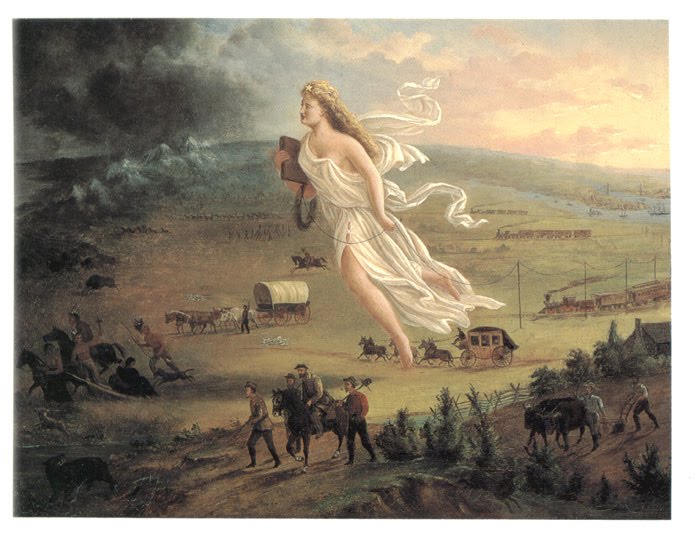

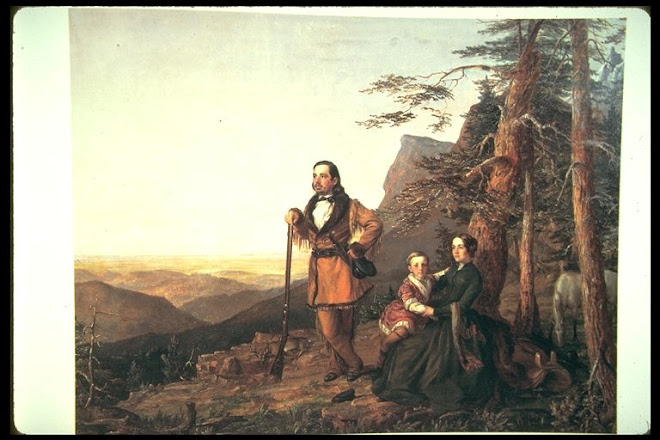
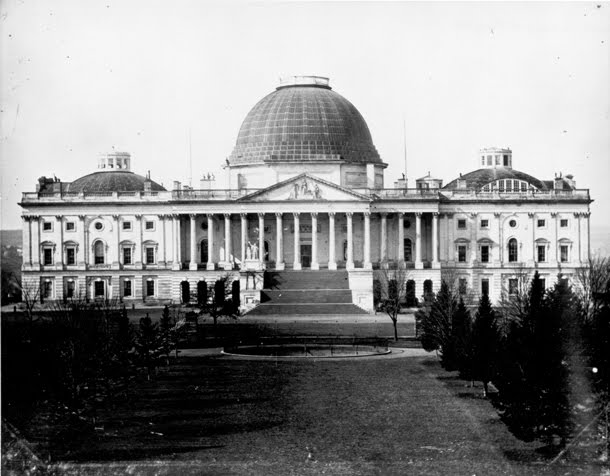




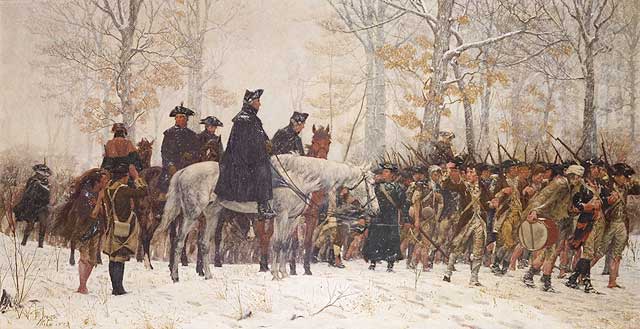
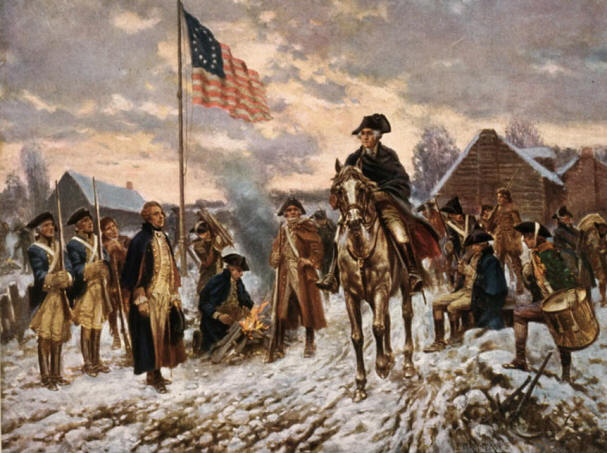


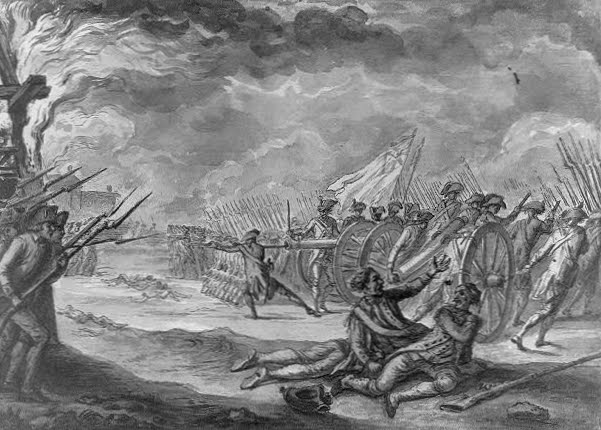
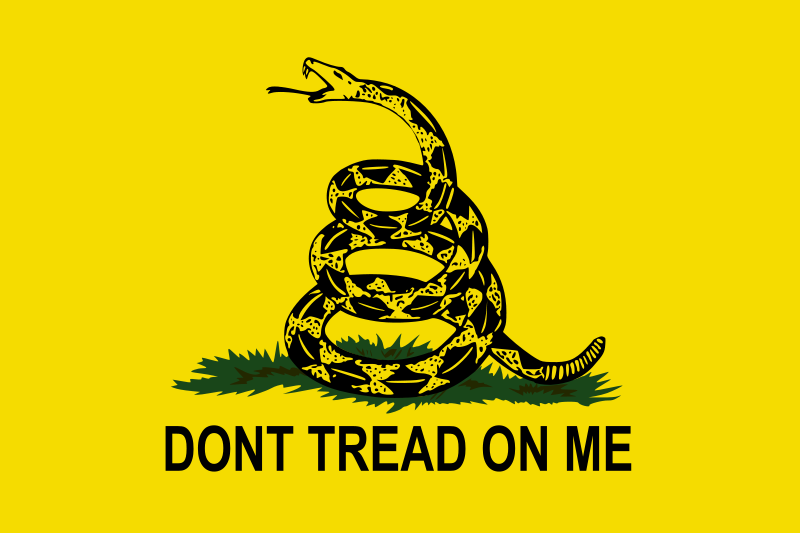
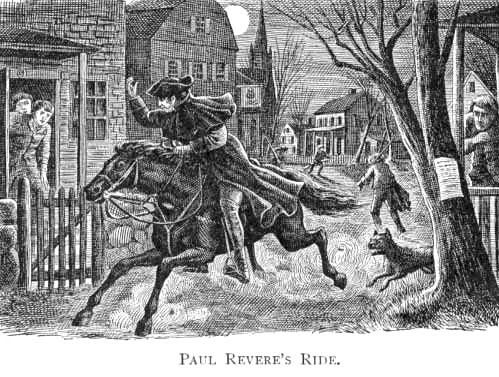

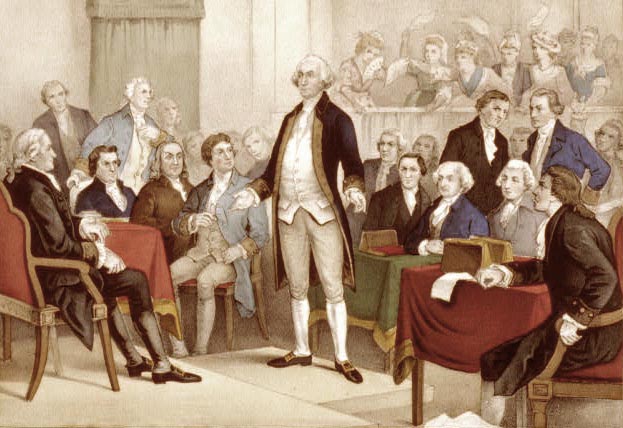

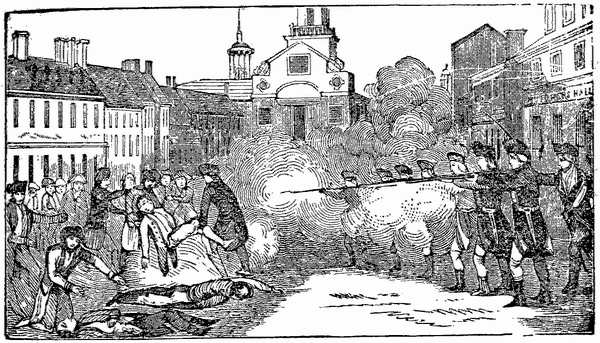

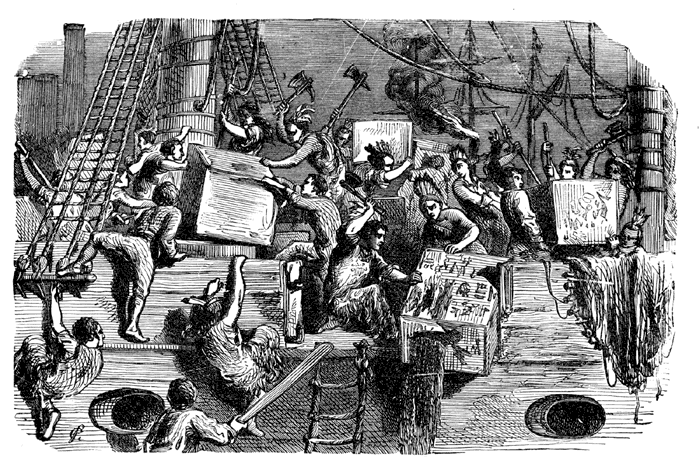




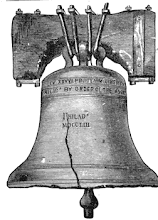




No comments:
Post a Comment